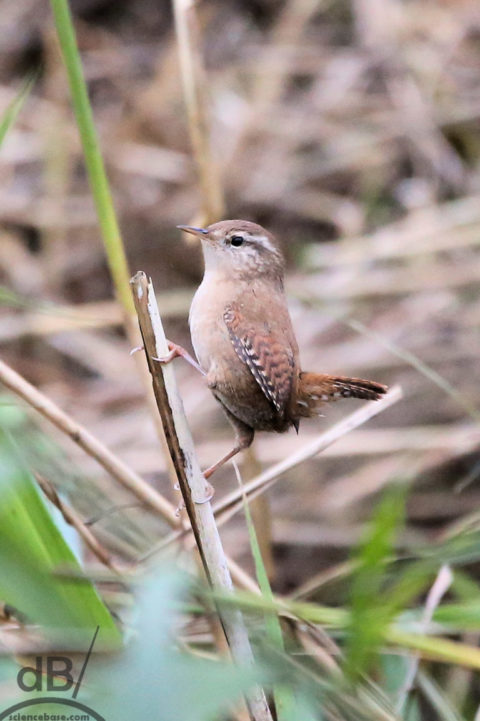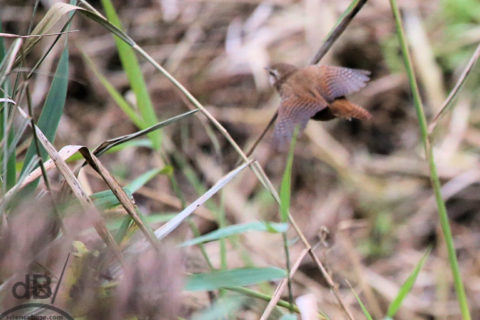At the time of writing, the UK’s Environment Agency is busy clearing reeds from the Cottenham Lode to allow the drain to do its job properly in the winter. The reed warblers, reed buntings, whitethroats, corn buntings, meadow pipits, linnets, yellowhammers, and others that spent the summer along the Lode and in the fields and hedgerows close to it all seem quiet or to have moved on. The warblers migrating to warmer climes, the buntings, pipits, and linnets maybe just hiding or perhaps having relocated away from close to the watercourse to elsewhere in the surrounding countryside.
However, I did spot one straggler. The UK’s smallest and most common native bird, the Wren. It was flitting in and out of the reeds and almost playing at reed warbler earlier today possibly taking its last chance to snatch at insects and spiders living among the water plants before that EA dredger scrapes them out of the water and dumps them on the bank of the flood defences.

Wren (Troglodytes troglodytes) – the name Wren comes from a German word of unknown origin. In old High German the bird is also known as a kuningilin meaning kinglet. The troglodytes of its scientific name comes from the Greek meaning something that dives into a (mouse) hole (or in a related sense a “cave dweller”). The doubling of the word makes it a tautonym, which I’ve mentioned before means this species is the “type” of the family.
Having stalked this particular specimen for a few minutes on a drizzly, lunchtime dog walk, I eventually got a decent snap of it clinging to a reed stump (see above) and also caught it as it took flight (below). I should add that this is probably the same specimen I photographed on this exact patch of reeds at the beginning of the year.
